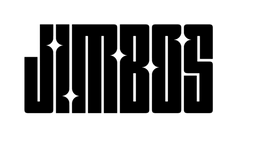Wet Sanding vs Polishing – When to Choose Each
Wet sanding and polishing are often confused, but they are very different techniques with very different purposes. Both can dramatically improve paint, but knowing when to choose wet sanding versus polishing is critical for achieving the right results without risking long-term damage. In this guide, we’ll break down the science, the situations, and the tools for both methods — and show you how products like Picture Perfect Polish fit into the process.
What Is Polishing?
Polishing is the process of using abrasives and a pad (usually on a dual action or rotary machine) to remove a microscopic layer of clear coat. This levels out defects like swirls, oxidation, and light scratches, leaving a smooth, glossy surface.
Key Characteristics of Polishing
- Depth of Removal: Minimal (microns of clear coat).
- Tools: Machine polisher, pad, and polish.
- Defects Removed: Swirls, haze, light-to-moderate scratches.
- Risk Level: Low to medium.
What Is Wet Sanding?
Wet sanding involves using fine-grit sandpaper (1,000–3,000+ grit) with water to level out deeper defects in paint. Instead of just polishing out swirls, wet sanding cuts directly into the clear coat to flatten severe scratches, orange peel, or heavy oxidation.
Key Characteristics of Wet Sanding
- Depth of Removal: Significant — removes more microns of clear coat.
- Tools: Sandpaper, sanding block or DA sanding disc, lubricant (usually water).
- Defects Removed: Severe scratches, orange peel, heavy oxidation.
- Risk Level: High — improper use can burn through clear coat.
Comparison: Wet Sanding vs Polishing
| Factor | Wet Sanding | Polishing |
|---|---|---|
| Clear Coat Removal | High (riskier) | Low (safer) |
| Defect Removal | Severe defects, orange peel, deep scratches | Light-to-moderate swirls, haze, oxidation |
| Tools Required | Sandpaper/discs, lubrication | Machine polisher, pads, polish |
| Finish Quality | Matte finish (requires polishing afterward) | Glossy finish |
| Skill Level | Advanced/Professional | Beginner to Professional |
When Should You Polish Instead of Wet Sand?
Polishing is the go-to option in most situations. Choose polishing when:
- Your vehicle has light-to-moderate swirl marks.
- You want to restore gloss and depth without major risk.
- You’re prepping paint for ceramic coatings like Gloss Boss or Tough As Shell.
- You’re working on a daily driver where perfection isn’t worth the risk of thinning clear coat.
When Should You Wet Sand Instead of Polish?
Wet sanding is a last-resort technique and should only be used when polishing won’t cut it. Choose wet sanding when:
- You’re correcting orange peel (bumpy, uneven clear coat).
- You need to remove severe scratches that catch a fingernail.
- You’re restoring faded or heavily oxidized paint.
- You’re working on a show car or repaint where maximum flatness and gloss are required.
Important: Wet sanding always requires polishing afterward. Sandpaper will leave a matte finish that must be refined with products like Picture Perfect Polish.
Step-by-Step: Safe Polishing for Most Cars
- Wash and Prep: Use The Super Soaper for a safe wash.
- Clay: Remove bonded contaminants.
- Select Pad: Choose cutting, polishing, or finishing based on defects.
- Apply Polish: Use Picture Perfect Polish with a DA machine.
- Work Small Areas: 2x2 ft. sections with overlapping passes.
- Inspect: Use LED lighting to check results.
- Protect: Lock in gloss with Tough As Shell.
Step-by-Step: Safe Wet Sanding (Advanced)
- Assess Paint: Use a paint thickness gauge to confirm enough clear coat is present.
- Soak Sandpaper: Pre-soak paper in water with a drop of soap.
- Sand Gently: Keep surface wet, apply light pressure in straight lines.
- Refine: Move up through finer grits (e.g., 1500 → 2000 → 3000).
- Polish: Follow with Picture Perfect Polish to restore gloss.
- Seal: Protect corrected paint with Gloss Boss for long-term durability.
Pro Tips for Choosing Between Wet Sanding and Polishing
- Always start with polishing — only wet sand if absolutely necessary.
- Never wet sand without measuring paint thickness first.
- Use high-quality sandpaper to minimize risk.
- Finish every wet sanding job with polishing to restore gloss.
Correct Safely with Picture Perfect Polish
Skip the risks of wet sanding unless absolutely necessary. For most paint correction needs, Picture Perfect Polish delivers the perfect balance of cut and finish.
Buy on Jimbo’s Detailing Buy on AmazonRelated Posts
- One-Step Polish vs Multi-Step Correction – Which Is Best?
- The Science of Paint Correction Explained
- How to Correct Paint Safely on Soft vs Hard Clear Coat
FAQs
Is wet sanding safe for beginners?
No. Wet sanding is an advanced technique that should only be performed by experienced detailers with the right tools.
Can polishing remove orange peel?
No. Orange peel requires wet sanding because it is a texture issue, not just surface-level defects.
Do I always need to polish after wet sanding?
Yes. Wet sanding leaves a dull, matte finish that must be refined through polishing.
How much clear coat is removed when wet sanding?
Depending on grit and technique, wet sanding can remove several microns of clear coat — much more than polishing.
When in doubt, should I polish first?
Yes. Always try polishing first. Wet sanding is a last resort for defects polishing cannot remove.



